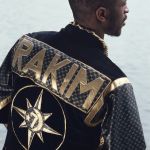.jpg)
A new exhibition explores the subversive fashion bootleg culture
When fake becomes a proper artistic language
February 10th, 2020
In the past, buying a fake item of clothing or accessory was a shame, a clear sign of an empty wallet. Now things have changed and a growing number of influential designers are adding fake inspiration to their collections. Do you remember when Palace Skateboards reworked Versace's Medusa or when Alessandro Michele proposed Guccy T-shirts for the 2017 Resort season with the logo evoking the brand's counterfeits popular in the 80s? And what about Ava Nirui from @avanope who built her career embroidering Gucci on Champion sweatshirts and merging Carhartt with the name Chanel? However, the credit for setting the trend goes to Vetements with the Official Fake capsule collection in which it featured a remix of items made specifically for the Korean market.
A new exhibition shows how behind the appropriation of a logo there is much more than a strategy to attract consumers. The Real Thing, held from 7 February to 2 May 2020 at the Fashion Space Gallery in London, explores the phenomenon of fashion bootleg, also showing its subversive power and ability to question the concepts of privilege and exclusivity.
Luxury brands and logos have always been the ultimate symbol of status in fashion, but as long as the real items have existed, so have the fakes. - Explains Anastasiia Fedorva, the curator of the project - copies destroy the concept of hierarchy - take something exclusive that belongs to the few, and make it yours. It's a strictly political process, you can really change the meaning of something and adapt it to your community.
And she adds:
My first memories of fashion were knock-offs – Versace jeans and Gucci belts commonly sold at markets in 1990s Russia. Even though I had no idea what these brands were, I could feel the power they had and the aspiration they represented. Growing in post-Soviet Russia, I remember seeing branding everywhere, but it wasn’t really used to imitate a luxury good; it was almost as a form of ornamentation.
The same philosophy led to the success of Dapper Dan, certainly the most famous bootlegger. The Harlem designer who dressed the biggest stars of hip-hop in the 80s with his creations made by transforming Louis Vuitton, Fendi and Gucci bags into fabrics for his tailor-made clothes, is living a second artistic life thanks to the partnership with Alessandro Michele and is one of the main protagonists of the London exhibition. Alongside the King of False, there are many contemporary creatives who use bootling as a technique to question contemporary society: from Roxman Gatt, who makes queer the typically masculine symbolism of the machine logo, to Akinola Davies Jr's shots of Kingsland Road women in fake Chanel hijabs; from radical brandalist Dr Noki to May Hands' clay sculptures criticizing excessive consumerism; from Ancuta Sarca's hybrid shoes to Hassan Kurbanbaev's Logomania series.
The duality between real and fake has now become an incredibly relevant artistic language for the 21st century. The Real Thing is an opportunity to reflect on this and how brands influence the perception of ourselves and the world around us.
The Real Thing will be open from 7 February to 2 May 2020 at the Fashion Space Gallery in London. The entrance is free.


































.jpg)












.jpg)
.jpg)
.jpg)
.jpg)
.jpg)
.jpg)
.jpg)
.jpg)
.jpg)













